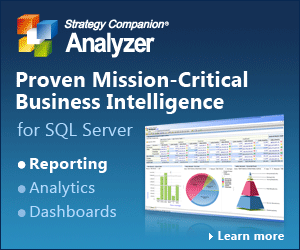Innovation in Automating Insurance Applications
- Sunday, November 22, 2009, 13:11
- Uncategorized
- Add a comment
iPipeline’s iGO Fills in the Blanks in Insurance Forms
 Applying for insurance often involves a lot of paperwork and therein lies the problem. According to iPipeline CEO Tim Wallace, industry-wide the proportion of applications that are not-in-good-order (NIGO) when first filled out is reportedly as high as 80 percent. Clearly, it’s an area with room for improvement.
Applying for insurance often involves a lot of paperwork and therein lies the problem. According to iPipeline CEO Tim Wallace, industry-wide the proportion of applications that are not-in-good-order (NIGO) when first filled out is reportedly as high as 80 percent. Clearly, it’s an area with room for improvement.
“The average sales cycle is 52 days,” Wallace says.
When Microsoft .NET 3.0 was released in 2006, iPipeline saw opportunity. “We saw that we could create more efficiencies with distributed channels that would allow independent agents to process life insurance applications with higher accuracy and a shorter sales cycle.”
What emerged was a .NET-based application called iGO e-App, that allows agents to input application data and submit insurance applications electronically. Through embedded rules and reflexive questioning, the application essentially trains agents with easy behavior modification that improves efficiency. Fields that are omitted or filled incorrectly are flagged so they can be easily spotted by the user. An added feature is that the form may not be electronically submitted unless it is 100 percent accurate.
“As a result, carriers know that the forms filed electronically have a gold star in terms of the quality of data and rather than taking 13 days, they may take two or three,” Wallace says.
Assurity Life Insurance Company, an early client of the application, saw dramatic results.
Assurity’s director of new business services Pat Criger reports that the processing time has been cut in half and what once took eight days was cut down to four. In addition, some agents have been able to use the extra time savings cut from the processing cycle to increase their submissions by 100 percent and the improved efficiency has even allowed agents to be paid faster – which is always good for morale. Furthermore, early on agents took to the new system.
“There were decreases in errors and agents would fight over who was going to use the e-App,” Criger says.
iPipeline’s Wallace says that for several clients the system has translated into reduced paper costs through electronic submissions, and reduced labor costs both because of the ease of managing electronic forms and because of the reduction in not-in-good-order forms that formerly had to be reviewed and corrected. The faster sales cycle translates into a reduction in the estimated three to five percent loss in placements that sometimes occurs when a customer just walks away from an application that may seem too lengthy.
Assurity had approached iPipeline in part because as it was beginning to hire new agents and it wanted to leverage the technological familiarity it was seeing in the younger generation of potential agents interviewing with the company.
“With the new generation of agents, technology is very important to them, and looking down the road we wanted our computer systems and technology to be ready,” says Criger.
Through a series of Webcasts, the two companies began communicating product guidelines, underwriting guidelines and business feedback to tailor the application to Assurity’s business model.
“Our rules are based on underwriting guidelines, with guidelines on minimum and maximum age, product rules and guidelines on data we need for different products,” Criger says.
The interface is clear and easy to navigate, she says.
“We have a yellow navigation tree that goes through the general information and product information, such as how much insurance someone is applying for. If everything is answered correctly there will be a green mark on the page and if information is missing there will be a red question mark to show agents what data is still needed.”
Technologically, the application has been designed for easy integration.
“Built on the .NET platform, we have architected it to have completely open XML feeds to link up to the carrier and provide data for other systems within the supply chain from CRM to back-end administration,” Wallace says.
For Assurity, this standardized architecture, which includes output in ACORD XML, meant the company was able to build a standard, automated process for consuming application data internally for processing.
Initially, Assurity has used iGO e-Apps to support simplified products that could be approved quickly, including simplified critical illness, simplified whole life, and simplified disability income. It is looking to expand the use of the application to automate the entry of medical data.
- Share
-
 Print This Post
Print This Post






